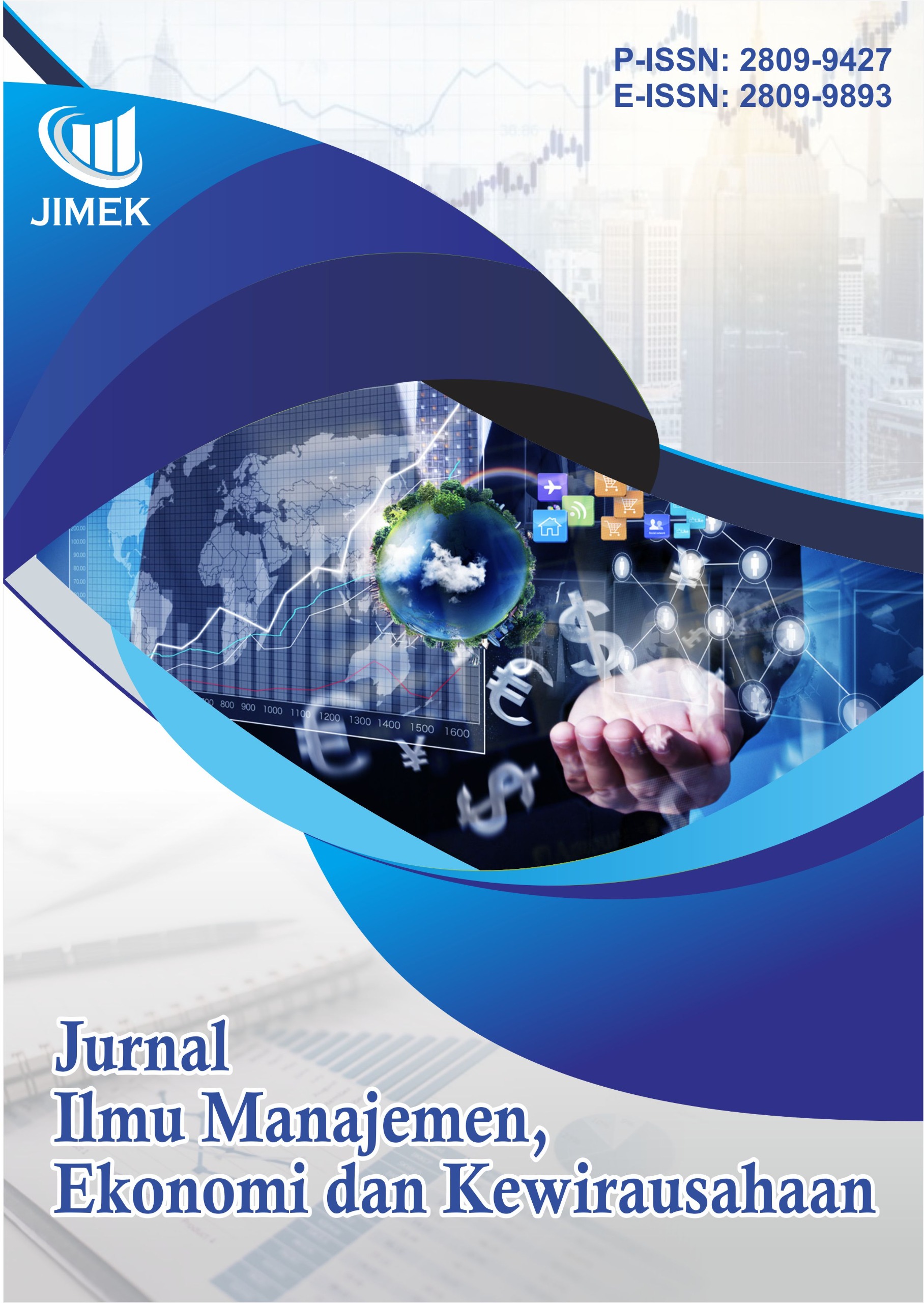Pengaruh Employee Engagement terhadap Turnover Intention Karyawan pada PT. Columbus Palopo
DOI:
https://doi.org/10.55606/jimek.v5i3.8124Keywords:
Compensation, Employee Engagement, Employee Loyalty, Turnover Intention, Work Motivation.Abstract
This study aims to determine the effect of employee engagement on employee turnover intention at PT. ABC. The background of this study is based on the high turnover intention phenomenon in several companies, which is often associated with the level of employee attachment to the organization. Employee engagement is considered an important factor that can foster loyalty, increase motivation, and strengthen employee commitment to the company. The type of research used is quantitative, utilizing primary and secondary data. Data collection was carried out through observation, interviews, and distribution of questionnaires to 36 employees as the research sample. Data analysis techniques include descriptive analysis, validity testing, reliability testing, and simple linear regression analysis to examine the relationship between research variables. Based on the analysis results, a regression coefficient value of 0.181 was obtained with a significance level of 0.359 (p > 0.05). This indicates that employee engagement does not have a significant effect on turnover intention. The R-square value of 0.025 indicates that employee engagement contributes only 2.5% to the variation in turnover intention, while the remaining 97.5% is influenced by other factors not examined, such as compensation, leadership, organizational culture, and the work environment. The findings of this study suggest that employee engagement alone is not a determining factor in reducing turnover intention. Therefore, companies need to consider other aspects that can strengthen employee bonds, such as rewards, effective communication, and career development opportunities. Therefore, this study provides an understanding that human resource management efforts must be carried out holistically, not solely focusing on employee engagement but also involving other, more complex variables.
References
Ariyanti, L. (2017). Pengaruh employee engagement terhadap turnover intention pada karyawan di Perusahaan X. Jurnal Manajemen Sumber Daya Manusia, 5(2), 120–130.
Armstrong, M. (2014). Armstrong's handbook of human resource management practice (13th ed.). Kogan Page.
Chauhan, R., & Sahoo, C. K. (2021). Impact of employee engagement on organizational performance: A review. International Journal of Human Resource Management, 12(2), 22–34.
Fauzia, N. K., & Marwansyah, M. (2020). Pengaruh employee engagement terhadap turnover intention: Studi kasus PT XYZ Bandung. Jurnal Riset Bisnis dan Investasi, 6(1), 1–12. https://doi.org/10.35313/jrbi.v6i1.1873
Gallup, Inc. (2019). State of the global workplace: Employee engagement insights for business leaders worldwide. Gallup Press.
Kahn, W. A. (2017). The psychological conditions of personal engagement and disengagement at work. Academy of Management Journal, 33(4), 692–724. https://doi.org/10.2307/256287
Kahn, W. A. (2020). The psychological conditions of personal engagement and disengagement at work. In J. P. Campbell & R. J. Sternberg (Eds.), Work and motivation (pp. 293–317). John Wiley & Sons.
Marthinus, E. (2020). Pengaruh employer branding terhadap turnover intention dengan employee engagement sebagai variabel moderasi (Studi pada karyawan divisi marketing PT. XYZ Cabang Surabaya). Jurnal Ilmu Manajemen (JIMFEB) Universitas Brawijaya, 8(4), 55–67.
Noviardy, E., & Aliya, N. (2020). Employee engagement: Pengaruh terhadap kinerja karyawan dan kepuasan kerja. Jurnal Psikologi Industri dan Organisasi, 18(2), 123–135.
Robinson, D., Perryman, S., & Hayday, S. (2017). The drivers of employee engagement. The Institute for Employment Studies.
Schaufeli, W. B., & Bakker, A. B. (2003). The measurement of work engagement with a short questionnaire: A cross-national study. Journal of Occupational Health Psychology, 8(4), 23–36. https://doi.org/10.1037/1076-8998.8.4.23
Schaufeli, W. B., & Taris, T. W. (2022). A critical review of the job demands-resources model: Implications for work engagement and well-being. Work & Stress, 36(3), 279–302. https://doi.org/10.1080/02678373.2022.2056315
Sugiyono. (2009). Metode penelitian kuantitatif, kualitatif, dan R&D. Alfabeta.
Sugiyono. (2017). Statistika untuk penelitian. Alfabeta.
Wijaya, F., & Sulistyo, U. (2016). The influence of employee engagement on organizational commitment and turnover intention. Journal of Management Development, 35(5), 719–734. https://doi.org/10.1108/JMD-11-2015-0160
Downloads
Published
How to Cite
Issue
Section
License
Copyright (c) 2025 Jurnal Ilmu Manajemen, Ekonomi dan Kewirausahaan

This work is licensed under a Creative Commons Attribution-ShareAlike 4.0 International License.








